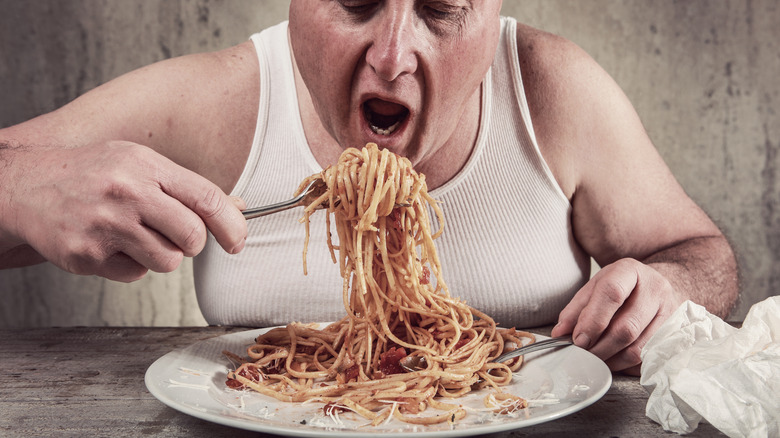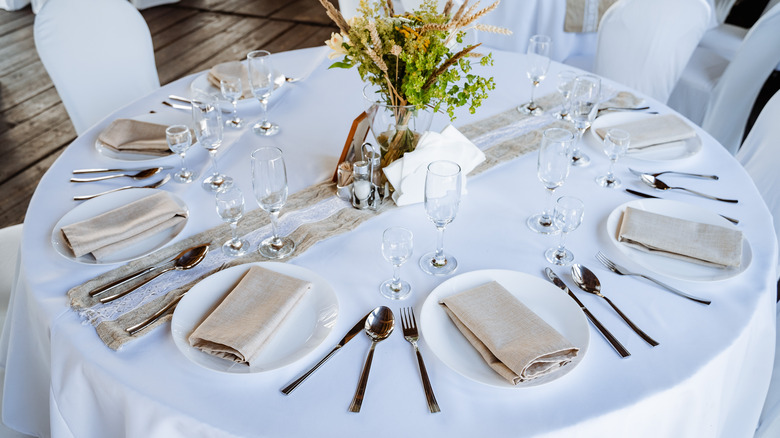These Table Manners Are More Practical Than Posh
Dining etiquette rules may sometimes come across as snobby or elitist. Whether or not you've been formally trained in those manners, some eating customs are just practical, common-sense approaches to making the people around you feel more at ease. We can all agree that chewing food with your mouth open or audibly smacking your food is, at the very least, unattractive and distracting.
The Huffington Post recently consulted Lizzie Post of the Emily Post Institute, a century-old family business that has become an essential resource for learning about etiquette and table manners. Post's experience with etiquette calls for one small but significant aspect of dining etiquette that everyone should be able to follow — avoiding general messiness. This entails nothing more complicated than ensuring your food goes into your mouth rather than ending up plastered to your face. Being less gross should be an easy mantra for most humans to aspire to.
Another well-known aspect of food etiquette is passing the salt and pepper together, even if someone only requests one or the other. The reasoning behind this approach is so that they don't get misplaced at a big table.
The utensil dilemma
One of the biggest challenges surrounding table manners, often flustering courteous guests trying to be polite, is what fork to use when multiple options are presented. Lizzie Post told the Huffington Post that people shouldn't fret over the salad vs. dinner fork debate. You can use either fork regardless of the course. The goal is to be more pragmatic, and as long as you are eating with a fork, you aren't committing an egregious faux pas.
While there are correct, or more efficient, ways to hold and position your utensils (at an angle with your thumb and index finger), the purpose is practical — preventing food from slipping off your plate and making a mess of that pristine white tablecloth.
If alcohol is involved in the meal, a toast may be declared at some point. The table manner guidance here calls for no slurping and more sipping; the objective is to not let your mannerisms distract people from what is being said.
Toast etiquette can also vary depending on the country. In America, it is perfectly acceptable to clink glasses while toasting, with the caveat that wine glasses should be clinked at the bowl and not the rim to prevent them from breaking. However, doing this in other countries may be considered bad food etiquette and could earn you sideways glances.

